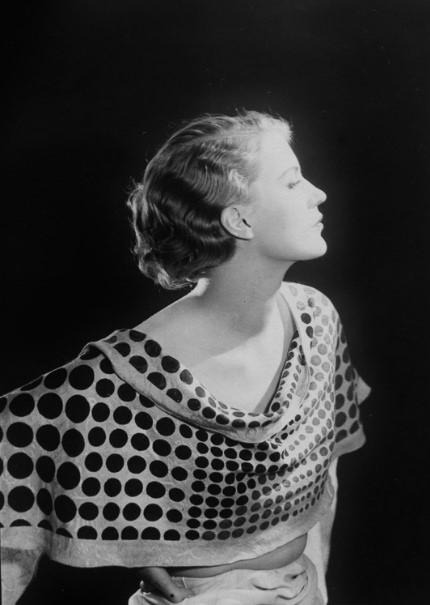Dora Philippine Kallmus (1881 – October 28, 1963) was an Austrian-Jewish fashion and portrait photographer who went by the name Madame D’ora. Dora, born in Vienna in 1881, came from a respected family of Jewish lawyers. In 1905 she was the first woman to be admitted to theory courses at the Graphische Lehr- und Versuchsanstalt. That same year she became a member of the Vienna Photographic Society. She trained at Nicola Perscheid’s studio in Berlin, where she became friends with his assistant Arthur Benda. In 1907 she opened a photography studio with Benda in Vienna called the Benda-D’Ora Studio. What followed was a distinguished career as a salon photographer. In 1925, she moved her atelier to Paris, and during the 30s and 40s rose to international prominence through society and high fashion photography. Both her er studios in Vienna and Paris became fashionable meeting places for the cultural and intellectual elite. In Vienna she had become extremely popular among the Austro-Hungarian aristocracy.
Her subjects included intellectuals, dancers, actors, painters, and writers, fx. Josephine Baker, Tamara de Lempicka, Maurice Chevalier, Colette, Niddy Impekoven. These vibrant portraits of twentieth-century artists and intellectuals remain important testaments to European cultural life at the turn of the century and beyond.
According to Jewish Women Encyclopedia D’Ora was one of the first photographers to focus on the emerging areas of modern, expressive dance and fashion, particularly after 1920, when fashion photographs started to replace drawings in magazines. While her photographic technique was not radical, her avant-garde subject matter was a risky choice. D’Ora’s photographs captured her clients’ individuality with new, natural positions in contrast to stiff, old-fashioned poses. D’Ora’s achievements also paved the way for other European women’s careers in photography, an area in which many Jewish women in particular found success.
When the Germans invaded France, Madame D’ora fled to a convent in the country side. Dora returned to France in 1946 and re-opened the studio.
In 1959 she was involved in a serious traffic accident that left her an invalid. She died in Frohnleiten, Steiermark, Austria, in 1963.

Marie Conte by Madame d’Ora

Fashion study by Madame d’Ora & Arthur Benda. Vienna, ca 1920












































